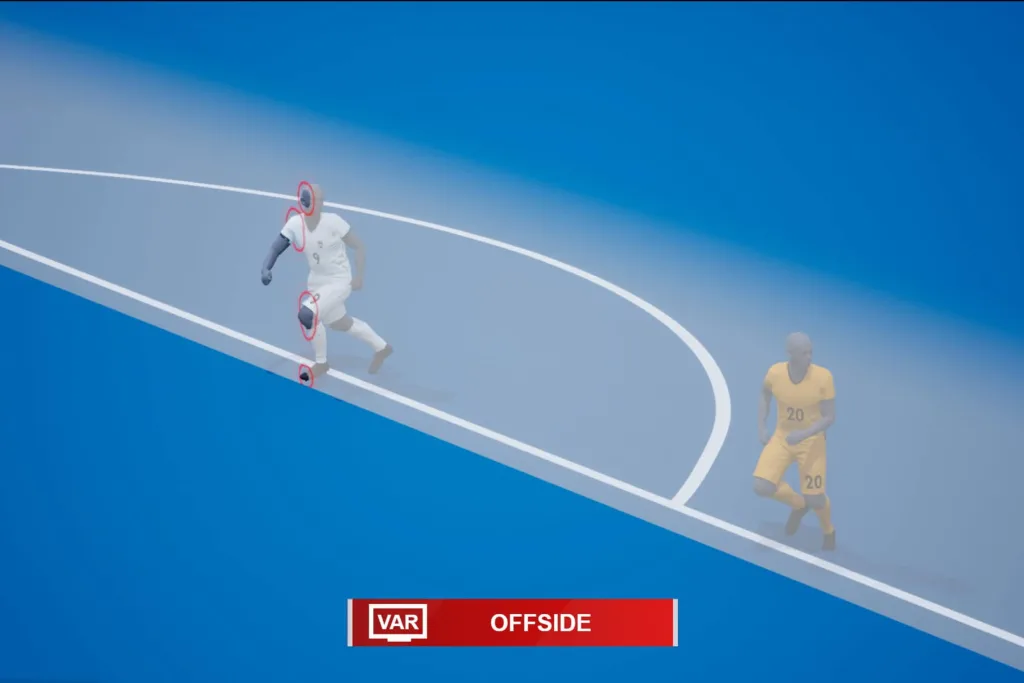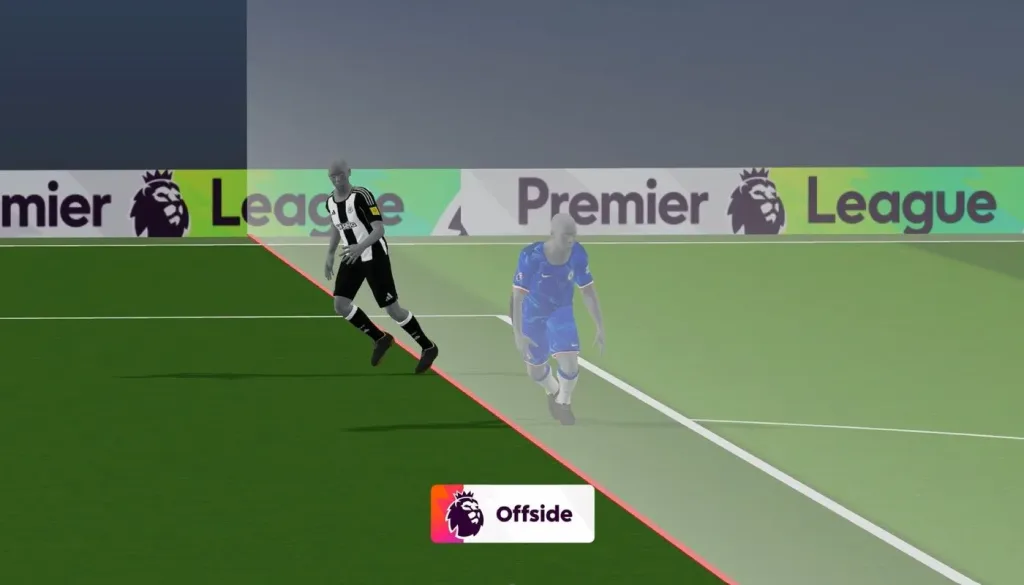The Premier League is set to introduce semi-automated offside technology (SAOT) on April 12, a move that marks a significant step forward in improving the speed and efficiency of offside decision-making in the top flight of English football.

This new system will be used for the first time during the weekend’s matches, including key fixtures such as Manchester City vs Crystal Palace and Arsenal vs Brentford.
Table of Contents
Introduction of Semi-Automated Offside Technology (SAOT)
After months of testing, both in non-live conditions and during the live operation in the FA Cup, the Premier League is now ready to roll out the much-anticipated semi-automated offside technology. Initially slated for introduction following the October or November international breaks, the deployment was delayed, but the technology will now be implemented in all Premier League matches from April 12.

In a statement, the Premier League confirmed: “Semi-automated offside technology automates key elements of the offside decision-making process to support the video assistant referee (VAR).“ The goal is not only to improve the accuracy of offside decisions but also to speed up the process, thereby enhancing the viewing experience for both fans in the stadium and at home.
How Does Semi-Automated Offside Technology Work?
Semi-automated offside technology involves the use of up to 30 tracking cameras installed in each Premier League stadium. These cameras operate at twice the frame-rate of the usual broadcast equipment, providing the system with a higher level of precision. They track both the ball and the players across the pitch, capturing thousands of data points per player.
The technology is designed to place the virtual offside line more accurately when reviewing tight calls. It helps officials by automatically sending an alert to the VAR hub when a potential offside situation arises, allowing for quicker analysis of the key moment.
The Premier League collaborates with PGMOL (Professional Game Match Officials Limited) and sports data company Genius Sports to implement this system. “The technology maintains the integrity of the process while enhancing the speed, efficiency, and consistency of offside decision-making,” stated the Premier League.
Benefits of the New System
The implementation of semi-automated offside technology is expected to bring several key benefits to the Premier League. The most significant advantage is the speed at which offside decisions will be made. On average, the Premier League hopes that the new system will reduce decision-making time by more than 30 seconds.

The system’s real-time alerts will provide VAR officials with more accurate data, which, in turn, will speed up the decision-making process. Additionally, graphics will be generated in real-time, allowing both fans in the stadium and viewers at home to see the offside lines clearly displayed on screens, offering greater transparency.
Impact on the Viewing Experience
For the fans in the stands, the new technology will provide a more immersive experience. By using computer-generated graphics, the virtual offside lines will be visible on large screens within the stadium. This aims to eliminate confusion and enhance the fans’ understanding of crucial decisions. Broadcasters will also have access to the same graphics, ensuring viewers at home can follow the action more closely.
The technology’s ability to track the ball and players across the pitch is an important step in creating a more efficient and consistent system. With fewer manual interventions required, the technology aims to streamline the offside review process without compromising the accuracy of the decision.
Potential Challenges and Limitations
While the Premier League is optimistic about the impact of semi-automated offside technology, there are still some challenges that may arise. The system relies on a high number of tracking cameras, which could occasionally encounter difficulties in cases where the ball is obscured among a cluster of players, known as “occlusion.” In such instances, the system may require additional verification by the VAR or even the on-field referee to ensure the offside decision is correct.
There are also “edge decisions” to consider, where a player’s position is extremely close to being offside. These borderline calls may still require subjective judgment from the officials, particularly when determining if a player was interfering with play. Despite these challenges, the Premier League remains confident that the technology will make the decision-making process more efficient, even if slight delays still occur in certain situations.
Premier League Chief’s Thoughts on the System
Premier League Chief Football Officer, Tony Scholes, has expressed confidence in the system’s effectiveness. Speaking about the development process, Scholes revealed that the Premier League had been working on a version of semi-automated offside technology that they believed would deliver the most accurate and future-proof results.
“The system that we’ve adopted, we believe it to be the best system,” Scholes said. “We believe it to be the most accurate and the most future-proof system as well. I have to confess, given the difficulties that we had over the first few months of the season, I had severe doubts about this but the progress made over the last four to six weeks has been significant.”

Scholes also addressed concerns about introducing the technology with only a handful of games remaining in the season, saying that it would not impact the integrity of the competition. “The operation of semi-automated offside technology does not change the integrity of the offside law and doesn’t change the integrity of decision-making,” he explained.
The Future of Offside Technology in Football
The introduction of semi-automated offside technology in the Premier League is part of a broader trend of adopting more advanced technological solutions in football. Similar systems were tested during the 2022 World Cup, which showcased the potential of such technology in high-stakes tournaments. By implementing this technology in the Premier League, the competition will be at the forefront of innovation in football officiating.
The Premier League’s collaboration with Genius Sports and PGMOL demonstrates the league’s commitment to enhancing the accuracy and speed of its decision-making processes. With semi-automated offside technology now in place, the next steps will be to further refine the system and potentially expand its use to other aspects of the game.
Premier League Matches to Watch on April 12
The Premier League’s first weekend with semi-automated offside technology will feature exciting matchups:
- Manchester City vs Crystal Palace
- Brighton vs Leicester
- Nottingham Forest vs Everton
- Southampton vs Aston Villa
- Arsenal vs Brentford
Fans can expect faster, more efficient decision-making during these matches, with the new system ensuring that offside calls are made with greater accuracy and transparency.
Read More: Erling Haaland Sidelined for 7 Weeks: Manchester City Face Major Setback
FAQs
What is semi-automated offside technology in the Premier League?
It uses tracking cameras to help officials make faster, more accurate offside decisions with virtual offside lines and real-time graphics.
When will it debut in the Premier League?
The technology will be introduced on April 12, 2025.
How does it improve offside decisions?
It automates key elements and speeds up decision-making by providing accurate offside lines and graphics.
What challenges may occur with this technology?
Potential issues include occlusion of the ball and subjective offside interference decisions.
Why was the technology delayed?
Initial plans were postponed due to development challenges, but significant progress was made in recent weeks.








